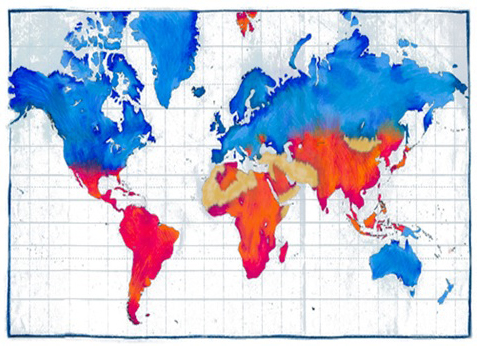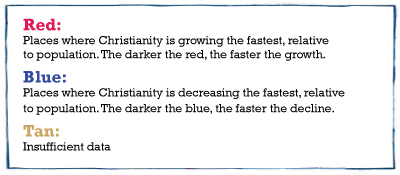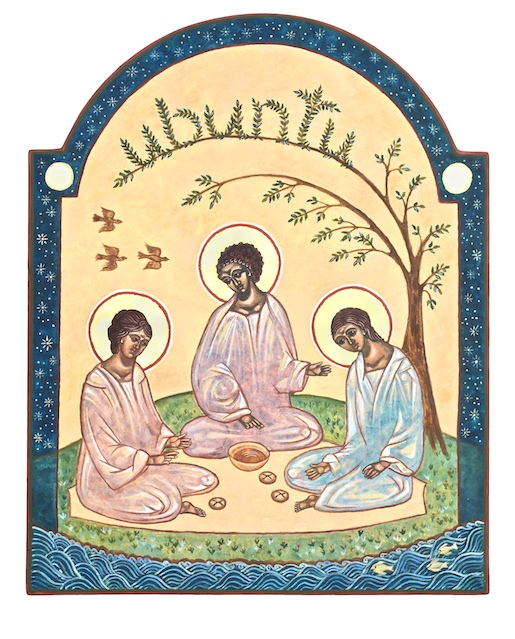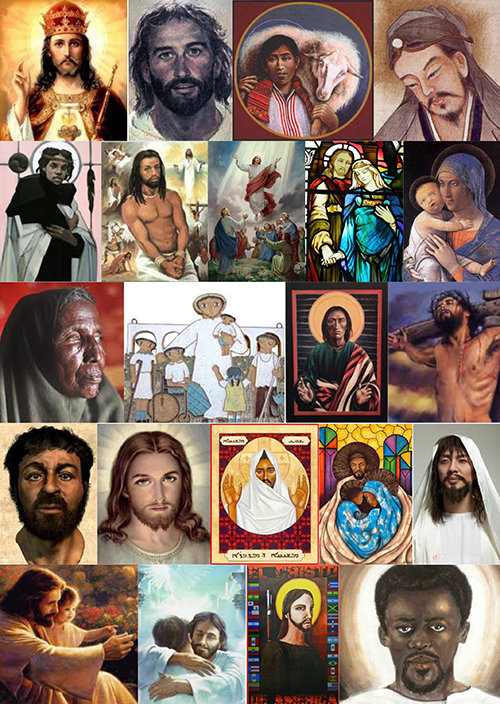

Resources
Images of Christianity today

1. When you think of Christianity today, what images comes to mind?
Images of Christianity’s Global Presence


1. What surprises you about this map?
2. Where do you see evidence of these changes in our world? In your community?
Images of Mission Work
The North American context in which mission takes place is changing in many ways. The numerical strength of Christianity has shifted to the global South and, at the same time, each year thousands of people from the global South immigrate to North America and Europe, bringing their faith with them. However, for the vast majority of North American Christians, the view of mission as an activity from “us” to “them” has not evolved to match these contextual changes.
African historian and theologian Jehu Hanciles has noted,
Global Christianity’s center of gravity has shifted to the non-Western world and, by most accounts, non-Western missionary initiatives are growing fastest. But the Western missionary movement (dominated by the US) remains the most visible and, outwardly at least, quite dominant; though it is chiefly manifested in an unrelenting tide of short-term mission activity. More to the point, the idea of “missions” as a Western prerogative and privilege remains entrenched. Even occasional church goers in the West mentally associate missionary activity with American or European projects and sending.
The idea that Western societies are viewed as a “mission field” by people who exist in the Western mind as the main objects of Western missionary sending, can be disconcerting… Very few perceive the newcomers as partners and co-collaborators in ministry. All too often, in fact, a homegrown church might spend thousands of dollars sending a mission team to Ghana and completely ignore the Ghanaian dominated church down the road.
Jehu Hanciles, “Migrants as Missionaries, Missionaries as Outsiders: Reflections on African Christian Presence in Western Societies” in Mission Studies Vol. 30 No. 1, 2013, 78-79.
1. What does it mean to be “in community?”
2. In our world, what are the challenges of being in community with others? What examples can you give from past experience?
3. What are key aspects of working together as “partners and co-collaborators?”
Images of God
Rublev’s Trinity Icon
Painted by Andrei Rublev in the 15th Century, this icon depicts both the three angels who visited Abraham and Sarah at the Oaks of Mamre as well as the three persons of the Trinity. There is much symbolism that can help in our understanding of partnership and presence.
![]()
Rublev’s Icon of the Trinity (Russian)
“The angels are in communion with each other, yet none of their backs are turned to us. Their circle is not closed – there is a place at the table for us to join in their fellowship. Rather than growing smaller with distance, the table is in reverse perspective – the picture isn’t pointing off into the horizon, but pointing at the viewer. We are meant to be drawn in to the fellowship of the Trinity.”
(from http://wondersforoyarsa.blogspot.com/2006/08/holy-trinity.html).

An African interpretation: Rublev’s Icon of the Trinity (Ubuntu)
“The position of the three figures is suggestive. Although they are arranged in a circle, the circle is not closed. One has the distinct sensation when meditating on the icon that one is not only invited into this communion but, indeed, one already is part of it. A self-contained God, a closed divine society, would hardly be a fitting archetype for hospitality and partnership. We should not miss the significance of the Eucharistic cup in the center, which is the sacramental sign of our communion with God and one another.”(from Catherine Mowry LaCugna, ed. Freeing Theology: The Essentials of Theology in Feminist Perspective (San Francisco: Harper San Francisco, 1993), 84.
-
1. How does our image of God or the Sacred influence our understanding of community?
2. In what ways do we and/or our churches invite and welcome community?
3. In what ways are we and/or our churches closed to community?
Images of Jesus
Read: Matthew 16:13-20
-
1. Why might the disciples have disagreed about who Jesus was?
2. What does Jesus mean when he calls himself the “Son of Man”?
3. Why did he tell the disciples not to announce he was the Messiah, or “anointed savior”?
Reflect: From the first disciples to Church leaders through the ages, people of faith have understood Jesus in different, sometimes varying, ways. To some Jesus was a teacher, healer and prophet. Others called him Messiah or Emmanuel –“God with us.” Similarly, some viewed him as an innocent victim of imperial authorities, others as a table-turning revolutionary.
- 1. Can Jesus be both “suffering Servant,” or a sacrificial Lamb, and the Ruler of Heaven who conquers death?
2. How can we call the Son of God our personal friend?
3. Is Jesus all things to all people?

Examine and share what you see in these various representations of Christ.
- 1. What images of Jesus reflect ways you think about him?
2. Why would different people tend to portray Jesus differently?
3. How does the way we imagine Jesus affect how we view ourselves, others, and God?
Danger of a Single Story
-
1. What are some single stories told about the US/your state/your community? And how does that understanding impact you?
2. Who do “we” have a single story about? Where do these stories come from and why do they persist?
3. What do we miss when we buy into a single story?
Loving Beyond Labels
Mark 12: 28-31 says “28 One of the scribes came near and heard them disputing with one another, and seeing that he answered them well, he asked him, “Which commandment is the first of all?” 29 Jesus answered, “The first is, ’Hear, O Israel: the Lord our God, the Lord is one; 30 you shall love the Lord your God with all your heart, and with all your soul, and with all your mind, and with all your strength.’ 31 The second is this, ‘You shall love your neighbor as yourself.’ There is no other commandment greater than these.”
-
1. How does our society define “neighbor”? How do you define “neighbor”?
2. In what ways is it difficult to live out this scripture? In what ways is it difficult for our churches to live it out?




